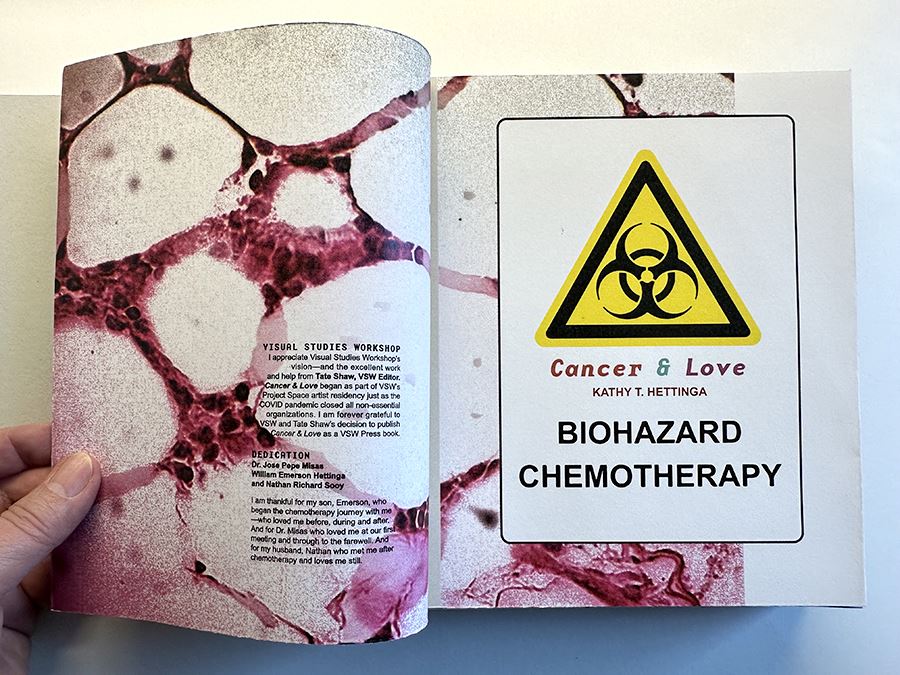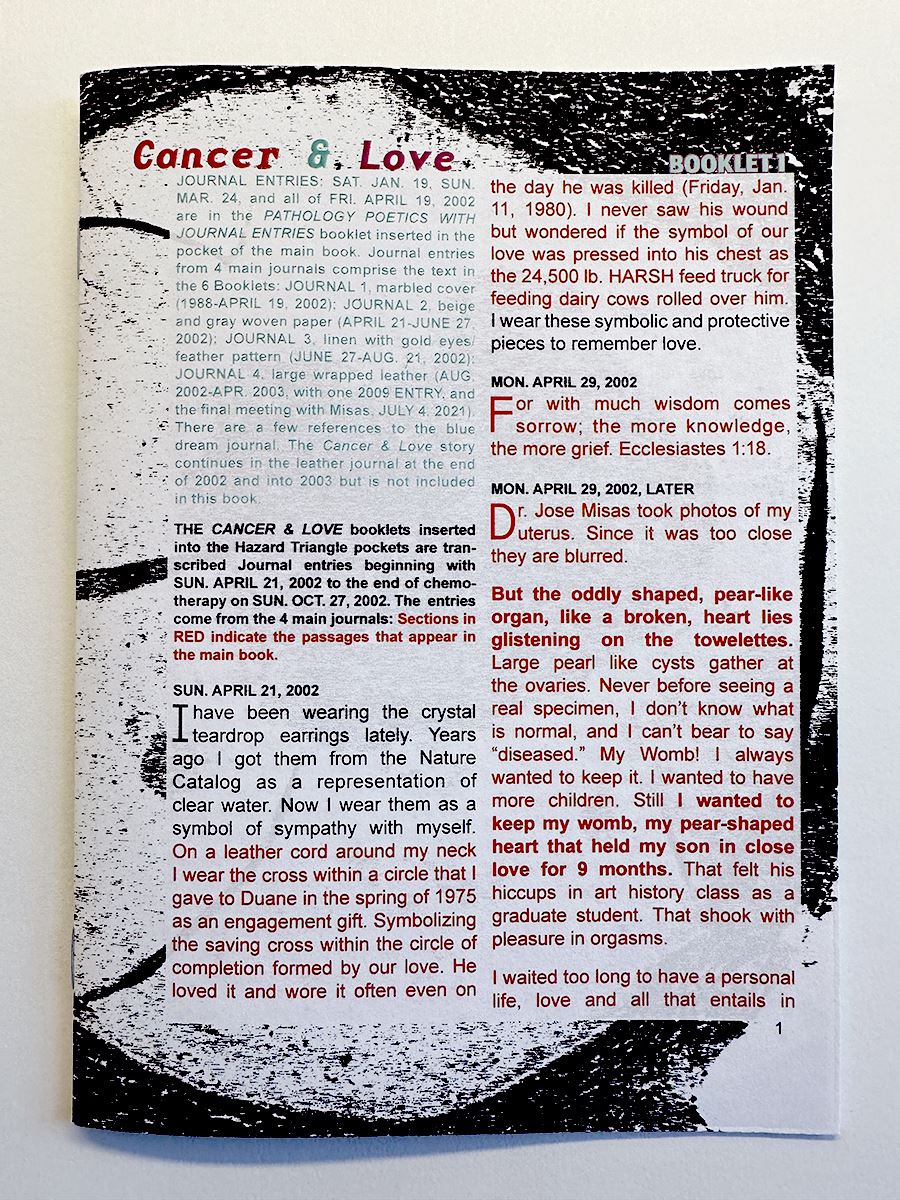Cancer & Love began as part of Visual Studies Workshop’s Project Space artist residency just as the COVID pandemic closed all non-essential organizations. Tate Shaw, Editor of VSW Press, offered to work with me long distance via email, phone, file uploads, and mailed dummies to publish my artist’s book as a VSW Press book. This began a creative collaboration that has resulted in a fitting and complex structure that appropriately contains the story of my cancer journey and the love story with my oncologist—both filled with terror and awe.

Cancer & Love, Kathy T. Hettinga, French-folded Mohawk Superfine, 7 x 7.75 in.
The twenty-year narrative is shaped with selected text from seven journals, many photographs and digital microscope images from my pathology slides. The text grew, and the solution was to make six saddle-stitched booklets that fit within created envelopes. I am grateful that Tate recommended Jerremy Lorch, an editor sensitive to the needs of book artists. What follows is Jerremy’s reflection on his collaboration with me on the text of Cancer & Love.
“Artist books are singular and not served by a run-of-the-mill editing process, which threatens to strip away their nuanced interplay between image, text, and texture, between visual and verbal style, or between layers or choices of meaning. You can’t just bump them up against the Chicago Manual of Style and walk away with a “clean” text without potentially damaging them. The goal is still to help the author effectively convey ideas, but “effectively” here can be subjective. Clarity isn’t always the gold standard; it’s often as much about conveying feeling as it is about conveying meaning. You still need to consistently apply rules, but you are freer to establish a unique set of them for the book.
“Cancer & Love arrived in my inbox as a collection of files. Word documents containing various pieces of text and PDFs that included pictures and showing the layout. Just as I would casually flip through a physical copy of an artist book to understand it as a book object before settling in to read/immerse myself in it, I began by scrolling through the main PDF file. Once I had an idea of the ways in which form, image, and text would come together to create this object and convey Kathy’s story, I started my work with the text, beginning a skeletal assembly of the ruleset. After my initial review, Kathy and I had several conversations to flesh out that ruleset. Our conversations centered around the desired transmission and reception of the work and then moved to the creation and adaptation of stylistic, grammatical, syntactical, and formal conventions and their effect on the tone of the book.

Cancer & Love, Booklet 1, Kathy T. Hettinga, saddle-stitched, 5 x 7 in.
“This work is a bit like creating the laws of physics for a new world—you get to decide together how things operate within the space and you can be flexible and liberal in your choices, opting for non-standard stylistic and formatting elements and conventions that can contribute to the tone, visual appearance, reception, and conveyed meaning of the book.
“One goal of the editing process is to eliminate unintentional distractions, like simple mistakes or inconsistencies. The main goal, however, is to help the author to connect to the reader and better transmit his or her desired meaning and feeling. When I returned the files to Kathy, they had the typical markups of simple corrections and straightforward changes, but the real value that I was able to contribute to the project was in the marginal notes. It was here that I described my reception of the piece as a reader and offered suggestions—to be acted upon or not—along with the reasoning behind them. Because this type of editing is more collaborative and less rigid than others, those suggestions often took the form of a description of a potential pitfall, followed by multiple options for its resolution, along with comments on how each option could affect the reader’s reception.
“More than a year has passed since I returned those files to Kathy. It is a space of time for which I am grateful. It will allow me the distance to return to Cancer & Love in its finished form as something of a fresher recipient of Kathy’s story.”
Kathy T. Hettinga is a book artist, designer, photographer and hospice chaplain. Awarded the Distinguished Professor of Art, her books are in collections from the Fogg Museum to UCLA. Residencies include: Yale Research Fellow, Luce Center for Arts and Religion, Pyramid Atlantic, WSW and VSW.
Jerremy Lorch is an independent editor based in Rochester, New York. He has previously been a writing instructor at the University at Buffalo. He holds master’s degrees in English Literature from SUNY Brockport and the University at Buffalo. For more information please visit his Linkedin page: https://www.linkedin.com/in/jerremylorch/.

